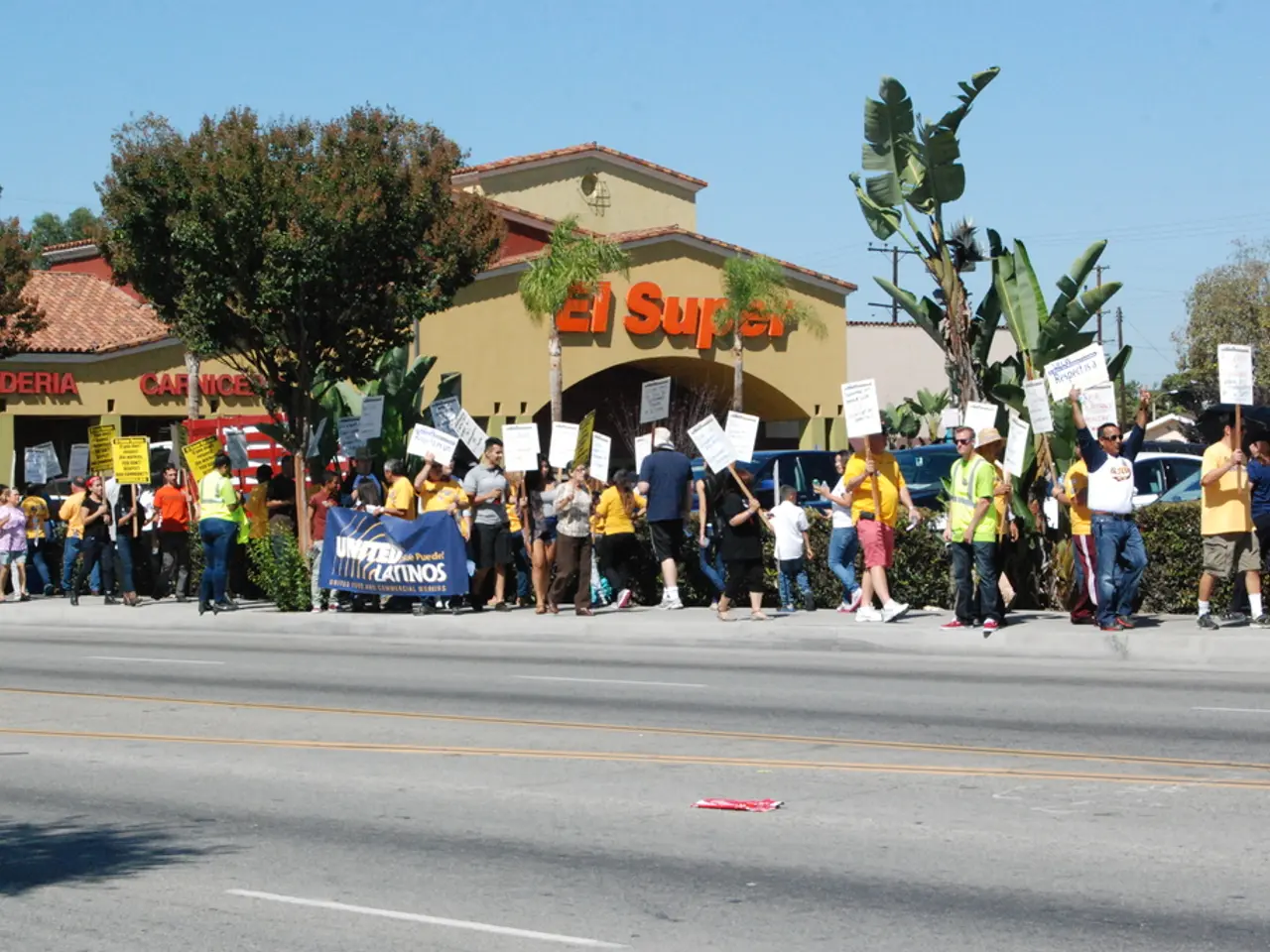Examining Political Campaign Data using Power BI: A Step-by-Step Guide
Power BI Transforms Political Campaign Management
Power BI, a business analytics tool from Microsoft, is revolutionizing the way political campaigns are managed. This powerful platform creates interactive dashboards that track key performance indicators (KPIs) such as donations, volunteer sign-ups, and voter contact rates.
By aggregating multiple data sources like voter databases, social media metrics, fundraising totals, event attendance, and ad performance into one interactive dashboard, Power BI offers a comprehensive campaign overview. This allows campaign teams to respond quickly to changing voter sentiment or emerging issues with real-time insights.
The data analyzed includes campaign finance, voting, and poll data. Power BI's ability to filter data helps in getting insights that are relevant to a campaign. It can identify specific audience segments for targeted messaging through filtering and grouping voter data.
Power BI's visualization capabilities are particularly useful for political campaigns. It can visualize geographic data to analyze voter demographics and tailor outreach strategies in specific regions, optimizing the distribution of campaign resources. Moreover, Power BI can present data in easy-to-understand visual formats, making it easier for campaign managers to track voter trends, measure outreach effectiveness, and identify areas needing attention.
Power BI also facilitates consistent reporting and communication through automated, visually engaging reports that can be shared with campaign stakeholders. This enhances transparency and coordination within the campaign team.
In addition, Power BI can be used for predictive analysis when combined with advanced data science approaches and machine learning models. This allows for forecasting voter behavior, measuring the incremental impact of campaign strategies, and improving targeting.
Power BI's integration with Microsoft products and Azure further supports advanced data manipulation and automation, enabling continuous data refresh and up-to-date insights critical for dynamic campaign environments.
In the future, Power BI is expected to integrate more AI-driven analytics, real-time voter sentiment tracking, and predictive modeling. It can also optimize campaign manpower by tracking volunteer hours, roles, and effectiveness. Additionally, Power BI can analyze publicly available data on opponents to identify strengths, weaknesses, and opportunities in opposition research.
Power BI can connect with various CRM platforms to pull voter and supporter data for real-time analysis. It can track media coverage, voter engagement, and donor contributions. Power BI can identify high-value supporters and forecast future fundraising potential.
Skills needed to use Power BI effectively in campaigns include data cleaning, visualization, DAX formulas, and knowledge of campaign metrics. Power BI allows users to collaborate with other team members on reports and dashboards. Users can schedule reports to be automatically generated and sent to others.
For more information or assistance, you can reach out to Power BI at the contact number 91 9848321284. With Power BI, political campaigns can transform raw data into interactive, easy-to-understand visual analytics, enabling informed, data-driven decisions for improved voter outreach, budget management, and overall campaign success.
- Political campaigns are utilizing Power BI, a business analytics tool from Microsoft, to revamp their strategy by creating interactive dashboards that track key performance indicators like donations, volunteer sign-ups, and voter contact rates.
- Power BI aggregates various data sources such as voter databases, social media metrics, fundraising totals, event attendance, and ad performance, offering a comprehensive analysis of campaign performance.
- The platform's filtering and grouping capabilities allow for targeted messaging by identifying specific audience segments based on voter data.
- Power BI's predictive analysis, when combined with advanced data science approaches and machine learning models, can forecast voter behavior, measure the effect of campaign strategies, and optimize targeting for political campaigns.







